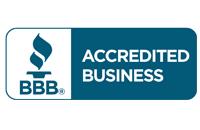Bankruptcy is a complex process that allows for debt restructuring or dismissal depending on the financial situation of the debtor. There are different routes one can go when facing bankruptcy, which include chapters 7, 11, and 13. Each one differs in how it can be utilized to ease the burden of debt. This blog discusses the differences between Chapter 7 and 13 bankruptcy.
Repayment vs. Liquidation
One of the biggest differences between chapter 7 and chapter 13 bankruptcies is that with one you will repay all or a portion of the debt and with the other, you may have to sell off certain assets that cannot be protected to repay creditors.
- Chapter 7 – Requires that you liquidate your assets to pay down or pay off your debt. If you owe more than you sell off, those debts are removed or forgiven. However, in most cases, you can keep all of your assets including houses and cars.
- Chapter 13 – Requires that you set up a repayment plan. This option works best in situations where there is regular income but not enough income to cover all the debts owed or in cases of foreclosure where you are attempting to save a house from the auction block.
Chapter 13 – Various Debt Types
The law allows for different types of debts. Some of those you pay in full under Chapter 13 and others are dismissed. There are three basic types of debts:
- Secured – An example of a secured debt is a car loan – if you cannot pay for your car it is repossessed.
- Unsecured – represent a larger part of the debt they include student loans, credit card debt, payday loans, medical expenses, and even utility bills.
- Priority – debt is a specialized section of the debt categories. Taxes are often part of the priority family of debts. In most cases, you cannot discharge tax debts in bankruptcy. Domestic support obligations are also priority debt and cannot be discharged in bankruptcy.
Chapter 7 – Is it Right For You?
If you do not have a regular income, have low income, and cannot pay your debts then Chapter 7 may be the better option. It requires that you sell off your unexempt assets and pay off as much of the debt as you can. What debt remains is forgiven, and you no longer owe money for those debts. When Chapter 7 completes you are free of debts and burdens to that creditor.
Not everything that you own must be liquidated. For example, if you have a car or mortgage loan that you can continue to pay then you may be able to keep your car or home.
Chapter 13 – Is it Right for You?
If you have a steady income and can repay your debts but not on the standard schedule that creditors require, then Chapter 13 may be a good fit for you. A Chapter 13 case lasts anywhere between 3 and 5 years. The process includes submitting a payment plan to the court, and they determine whether it is accepted. You pay the Chapter 13 trustee (who manages the money for the Court) and then the Trustee pays your creditors. Paying off the secure debt is the priority. Many times, the unsecured debt is removed or paid less than what you owe and the remainder is cleared at the end of the bankruptcy.
Contact Cozmyk Law Offices For If You Are Experiencing Financial Trouble
Bankruptcy is a complex process and while one chapter may seem a perfect fit for you, it must be approved by the court. It is a good idea to work with a lawyer who has experience helping people through the bankruptcy process.
Cozmyk Law offers bankruptcy and foreclosure help to communities throughout Ohio. Learn more about your bankruptcy options in Ohio by calling (877) 570-4440 and requesting a free consultation.


